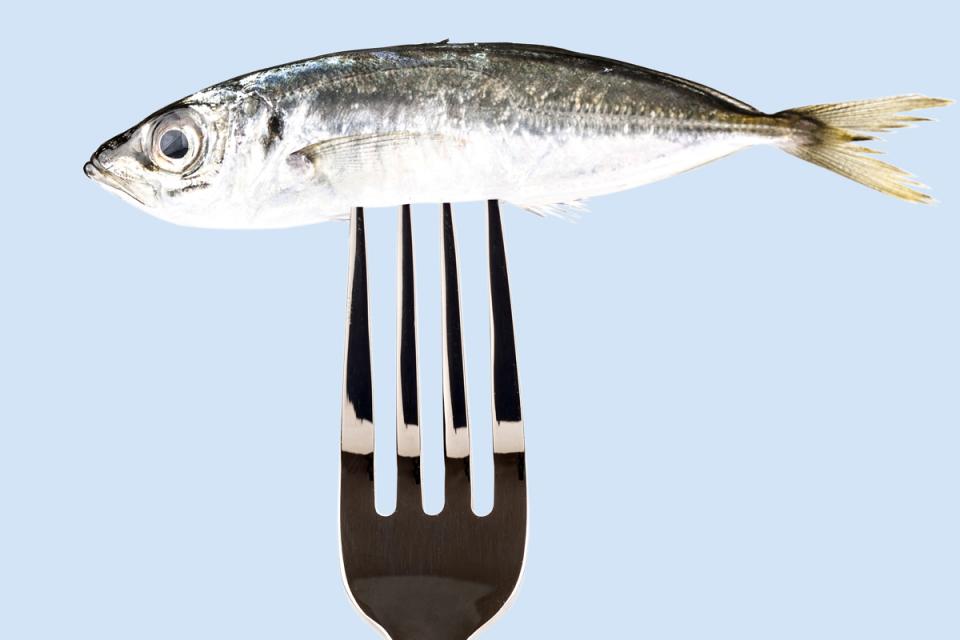by Sanna Delmonico, MS, RDN, CHES
Food for Thought
Exploring the nutritional benefits of wild and farmed fish.
Question
I have been trying to eat more salmon for the omega-3 fatty acids. What’s better nutritionally, wild or farmed fish?

Answer
All fish are good sources of protein. Fatty fish like salmon, mackerel, tuna, trout, anchovies and sardines are also good sources of vitamin D and omega-3 fatty acids. The American Heart Association recommends two 3.5-ounce servings of fish every week, especially fatty fish, because omega-3 fatty acids help reduce the risk of heart arrhythmias and lower blood triglycerides and blood pressure (AHA 2019).
The nutritional content of a fish depends on its diet. Wild salmon get omega-3 fatty acids from plankton, smaller fish and other seafood. These salmon get their color from pink and orange crustaceans like krill. Farmed salmon, raised in pens, are fed pellets made from fish meal, fish oil, plant proteins (such as corn and soy), animal proteins, vitamins and minerals, as well as carotenoid pigments to turn their flesh orange (NOAA 2018).
Because of differences in diet and how active and, therefore, relatively lean the wild fish are, Atlantic farmed salmon has twice as much total fat as Atlantic wild salmon (13.5 grams per 100 g, compared with 6.5 g per 100 g), significantly more omega-6 fatty acids, and three times as much saturated fat (USDA n.d.). Farmed fish can be higher than wild fish in omega-3 fatty acids, too. Since the early 2000s, however, the composition of farmed salmon has been changing. Fish meal and fish oil for feed have become scarcer and more expensive, so these ingredients are being replaced by plant proteins and plant oils in fish feed. Farmed salmon in 2015 had about half the omega-3 fatty acids it did in 2001 (Sissener 2018).
When it comes to choosing salmon, both farmed and wild are low in saturated fat compared with red meat. Salmon is delicious, but why not try some less popular sources of omega-3s, like anchovies or sardines? Quickly grilled, these small, flavorful fish pair extremely well with fresh herb sauces like gremolata, chimichurri or salsa verde.
References
AHA (American Heart Association). 2019. Fish and omega-3 fatty acids. Accessed Mar. 10, 2019: heart.org/en/healthy-living/healthy-eating/eat-smart/fats/fish-and-omega-3-fatty-acids.
NOAA (National Oceanic and Atmospheric Association). 2018. Feeds for aquaculture. Accessed Mar. 10, 2019: fisheries.noaa.gov/insight/feeds-aquaculture.
Sissener, N.H. 2018. Are we what we eat? Changes to the feed fatty acid composition of farmed salmon and its effects through the food chain. Journal of Experimental Biology, 221, jeb180976.
USDA (United States Department of Agriculture). n.d. USDA food composition databases. Accessed Mar. 15, 2019: ndb.nal.usda.gov/ndb/search/list.

